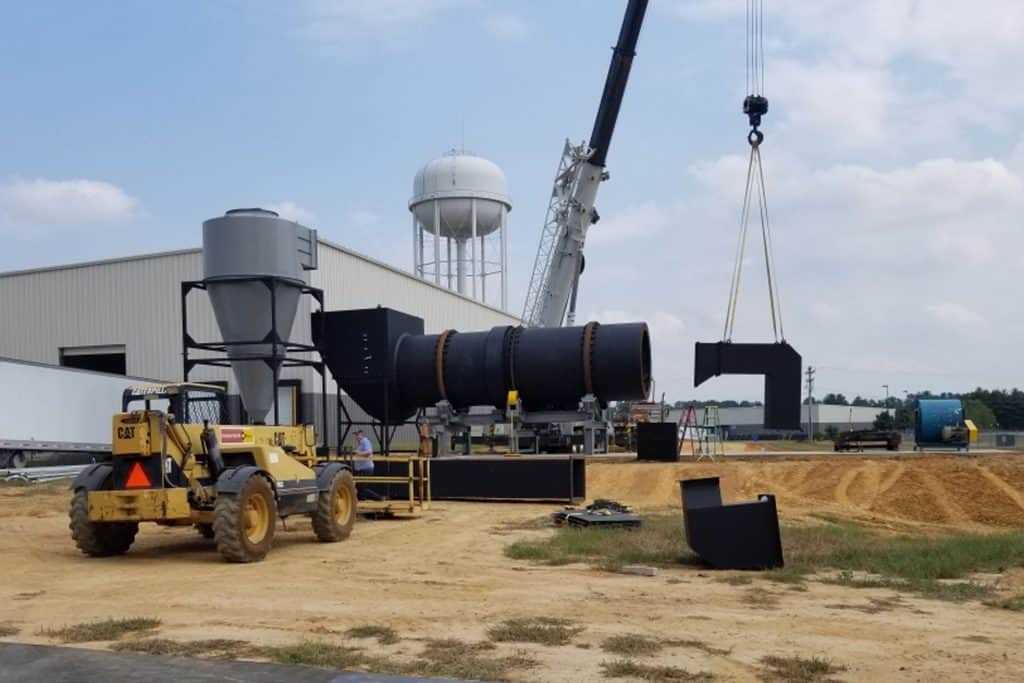By : Jeff Sayre
Manure is the primary waste product from raising broiler chickens, laying hens and turkeys as well. It may be manure alone in a confined layer operation or co-mingled with bedding and feathers in other operations. The manure itself although “solid” in appearance is as much as 70% moisture yet it will still convey via belt conveyor. If co-mingled with bedding, the poultry litter itself can be around 30% overall moisture so there can be a broad range of overall moisture content depending upon the operation,
While raw manure itself will convey and dry easily, when mixed with bedding and feathers in barn floor litter that accumulates over several weeks, the litter can be very clumpy and hard to break up in a dryer. In those instances, a “delumper” or mill is used to reduce the particles for uniform drying.


Due to the presence of feathers and bedding in some manure litter products, a combustion chamber is used to offset the flame of the burner from the feed breeching area of the drum dryer. This prevents flame contact with the material and allows more time for the burner and ambient air to mix so it can reduce the air temperature before passing through the materials being dried. The combustion chamber is lined with refractory to maximize heat transfer as well as for safety.
Once the manure or litter is fed into the dryer it passes through the drum portion over a lengthy residence time to allow exposure to the warm air stream. As the material moves down the slightly declined drum, it rotates in a circular motion and is lifted by a series of flites which begin dropping the material into the air stream from the 9:00 position to the 1:00 – 2:00 position to allow maximum surface area exposure to the warm air stream.
As the heated air strips the moisture from the product, the vaporized moisture is drawn through the discharge end of the system to the air pollution control via an induced air exhaust blower operating at a slightly negative air pressure. Airborne fine particles are dropped out of this air stream first in the knockout box (negative air chamber) and next in the cyclone. Optional methods of pollution control can include a filter baghouse or a wet scrubber for odor control in addition to particulate control.
Drying temperatures can vary depending upon the intended use. For a Class A biosolid, the temperature may be as high as 185 degrees F. Upon discharge, if being pelletized, the dried material can typically proceed directly to a pelletizer as the temperature may aid in binding the pellets together. If being stockpiled upon discharge a lengthy cooling conveyor or auger is recommended to allow temperature reduction. Vulcan Drying Systems can manufacture any or all components of a poultry manure drying system: https://vulcandryingsystems.com/blog/application/animal-manure-drying/



